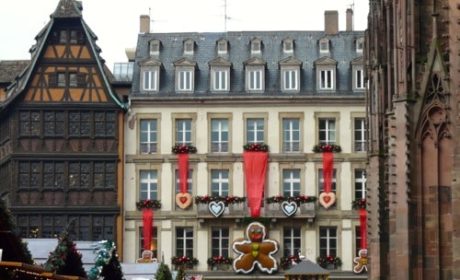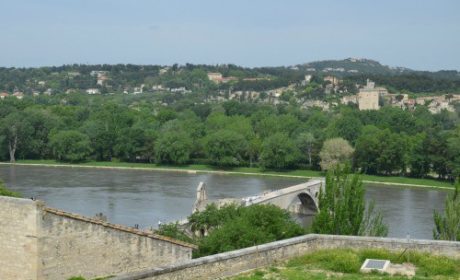When I think of the highlights of a Normandy trip, the D-day beaches and Mont Saint Michel immediately come to mind. But the Alabaster Coast, as the coast of Normandy is called, offers so much more to see like a picturesque UNESCO World Heritage Site and the beaches of the D-day landing.
My Itchy Travel Feet featured writer, Debi Lander of ByLanderSea, takes us on a trip filled with Normandy highlights. Use her tips whether you are on a Seine River Cruise or exploring by land. If you are looking for things to do in Normandy, read on.
Normandy, a region of northern France bordering the English Channel, offers a rich history dating from medieval times to 20th century World War II battles. Considered the birthplace of Impressionism, Normandy has been the inspiration for countless numbers of artists such as Claude Monet. It’s also known for farm-fresh regional cuisine, beautiful landscapes, and picturesque small medieval towns.
Normandy enjoys three UNESCO World Heritage Sites: Mont-Saint-Michel, Le Havre, and the Vauban fortifications in Saint-Vaast-la-Hougue. The region also hosts three sites listed as UNESCO Intangible Cultural Heritage: the Bayeux Tapestry, Alençon lace, and the Granville Carnival (a 150-year old festival held every February, similar to the Mardi Gras of New Orleans.)
Whether you explore Normandy by a cruise on the River Seine, a road trip along France’s first motorway, the famous A13, or a day trip via train from Paris, the region brings delightful surprises. See fortresses, half-timbered houses, cobblestone alleys, beautiful gardens, windswept beaches, and magnificent cathedrals.
Normandy becomes an ideal destination for Boomers combining history, culture, art, varied landscape, and outdoor activities.
Table of Contents
Normandy History
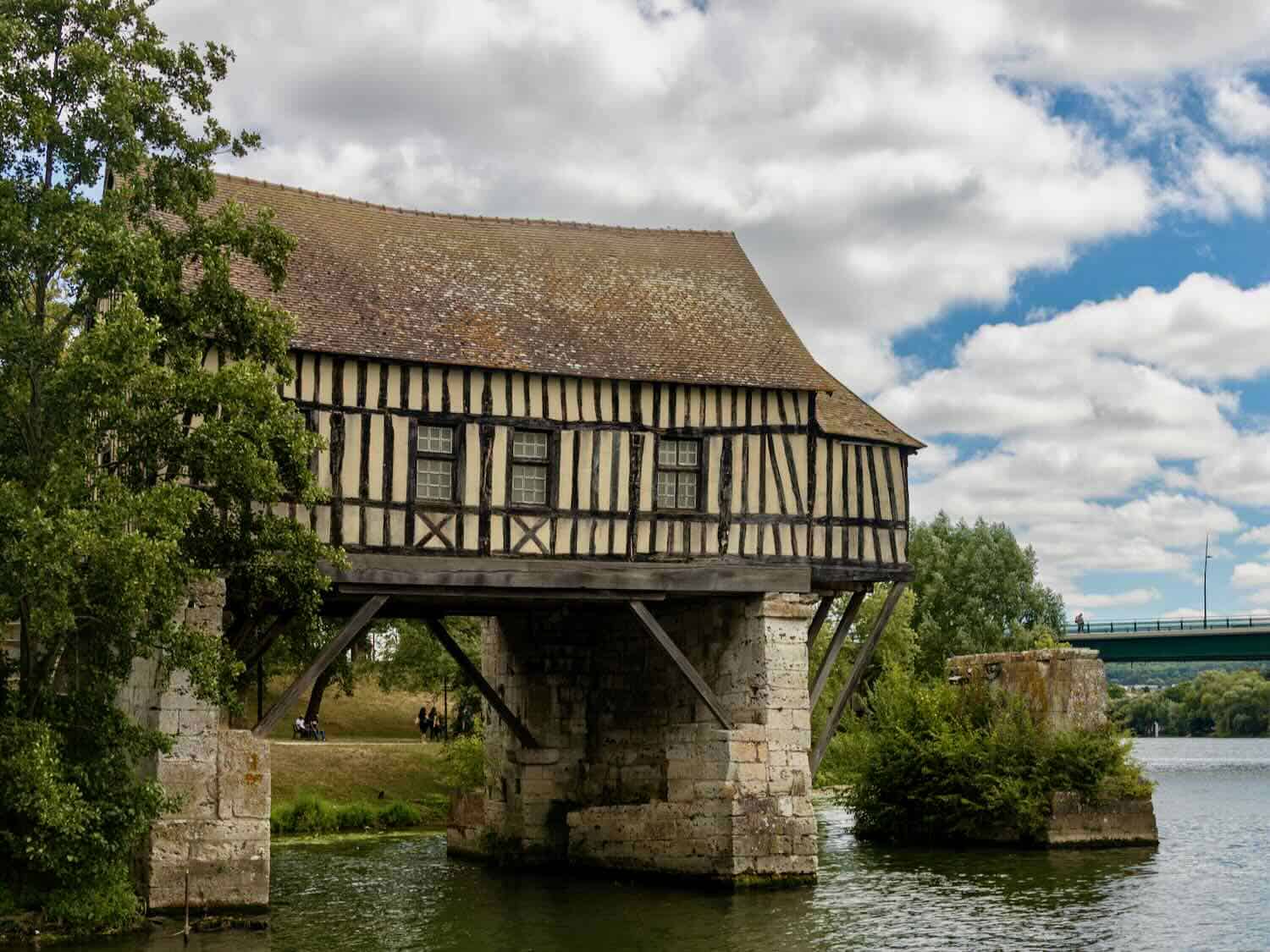
Normandy begins with the Viking settlers (The word Norman derives from the word Norseman) and continues with the epic Norman Conquest in 1066. Once, it stood as the center of a powerful medieval empire and gave a string of outstanding personalities: Rollo, William the Conqueror, Richard the Lionheart, and Joan of Arc. From the Hundred Years’ War to the allied invasion in 1944, Normandy captured the eyes of the world.
Boomer Travel Tip
In today’s travel climate, trip insurance is a must. Compare policies and rates at InsureMyTrip.
The Best things to do in Normandy for history lovers
Whether you’re exploring by river cruise or land adventure, you’ll find history at every turn with these Normandy highlights.
Medieval Rouen: History from the Middle Ages
Day trippers can take the Paris-Rouen train to arrive at Rouen in just an hour and 15 minutes. The city is also a popular stop on Normandy river cruises.
Rouen is the prefecture (main) city of the region. The impressive Rouen Cathedral dominates the old town. Still, you’ll also find fine museums, the fantastic Gros Horloge clock tower, and a beautiful modern church dedicated to Joan of Arc.
During medieval times and under English rule, William the Conqueror often held a court in Rouen. Richard the Lionheart was crowned Duke of Normandy and left his heart here. So did Joan of Arc, but against her will.
After Joan led several French battle successes against the English army, she was captured and ransomed off to the English. Joan was tried by French churchmen in English-ruled Rouen and ended up on the funeral pyre there in 1431.
Rouen’s Notre Dame Cathedral
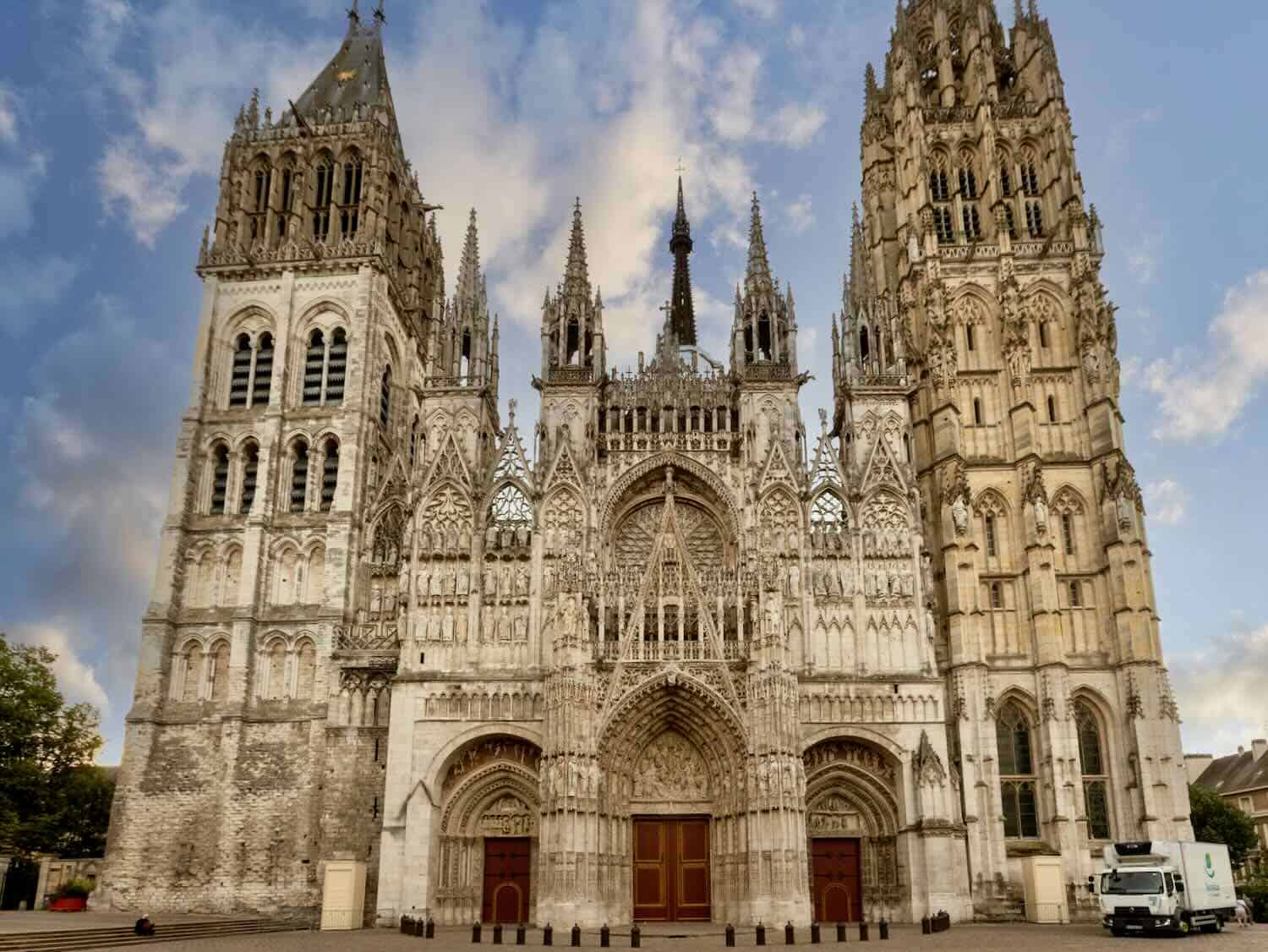
The Cathedrale Notre-Dame de Rouen is definitely a Normandy highlight. Photo by Debi Lander.
The size and detail on the stunning cathedral façade make everyone gasp upon first sight of Cathedrale Notre-Dame de Rouen. Two towers soar over domes, and finely detailed carved designs cover the cathedral exterior like intricate lace. The church, built between 1030 and 1880, ranks as one of the world’s most impressive examples of Gothic architecture.
Rouen suffered some disasters over the years. However, in 1939, almost all stained-glass windows in Rouen’s churches and historic buildings were removed and kept safe until the World War II’s end. Rouen Cathedral thus displays stained-glass windows dating from as far back as 1210 (13th century).
If possible, get a guided tour of the church, explaining when the different sections and towers were erected.
The nave soars four stories high, and the transept seems to stretch forever. Stop by the tomb of Richard the Lion Heart (1157-1199), king of England and 12th duke of Normandy but remember, it contains only his heart.
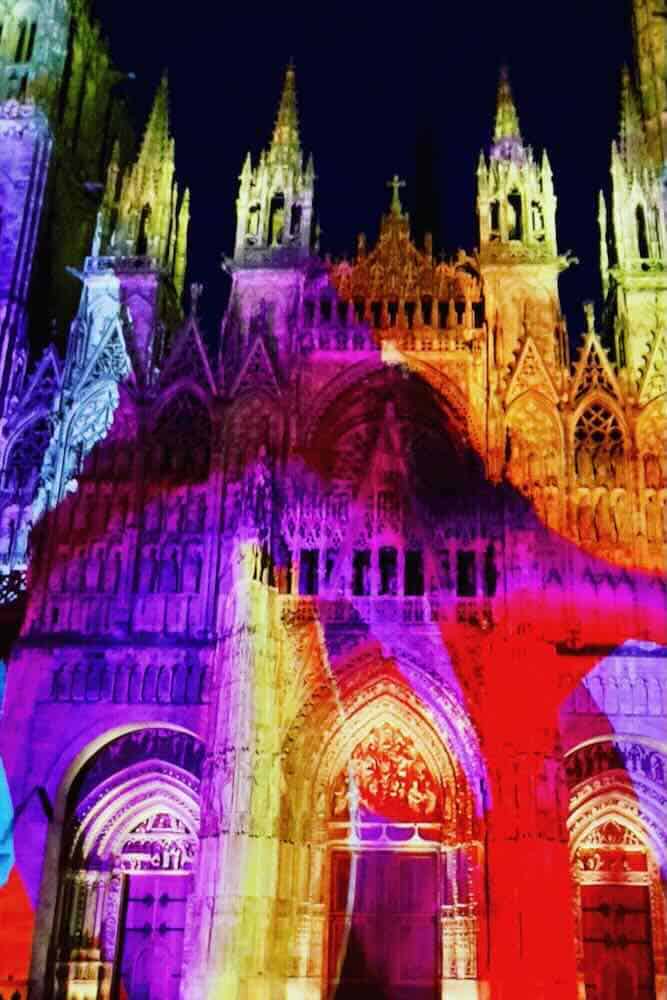
From June to September, a sound and light show projects onto the façade of the Rouen Cathedral at 11 pm. Don’t miss it if you get the chance.
The explosion of vibrant colors and technological mastery mesmerizes the audience, who watch in stunned silence. I found this unexpected bonus an incredible sight and lasting memory.
Boomer Travel Tip
Get up early to photograph the cathedral before the area becomes crowded with tourists. Many guided walking tours gather around the cathedral and stroll the city while you learn about its history.
Le Gros-Horloge
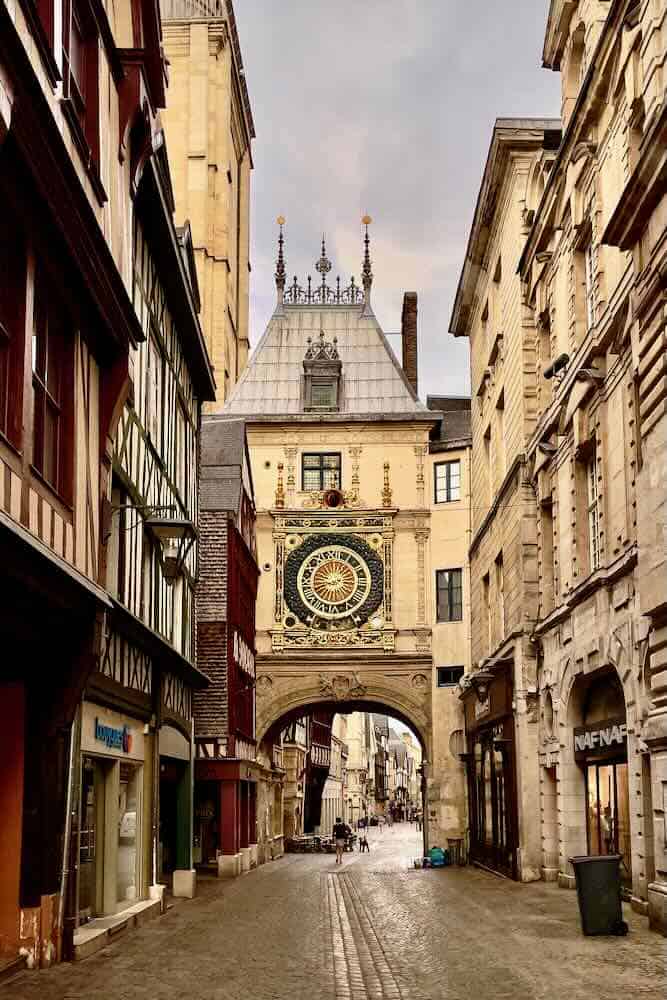
Another must-see in Rouen is the Le Gros-Horloge, not far from the cathedral. The magical-looking 14th-century astronomical clock spans the street on a Renaissance arch. The clock face represents the sun, with the sun’s rays representing the 24-hour day.
Joan of Arc
Rouen can’t deny that Joan of Arc was charged with heresy, tried, convicted, and burnt at stake in the Old Market Square. In 1456 Joan of Arc’s name was rehabilitated following a retrial. Not much help to Joan.
A modern church stands on the death site, the construction unappealing to me. But, once inside, I found it aglow with a beautiful wall of stained glass windows.
If time permits swing by the Joan of Arc Historical Museum devoted to her story. You’ll find it housed in the Archbishop’s Palace next to the cathedral.
Boomer Travel Tip
Linger near the modern church for a coffee and look for the photo-worthy house named La Couronne, France’s oldest inn. Many shops await, but my favorite remains a chocolatier selling Joan’s tears- chocolate-covered almonds. They’re delicious but rather pricey.
The Village of Bayeux: A Medieval tapestry worth seeing
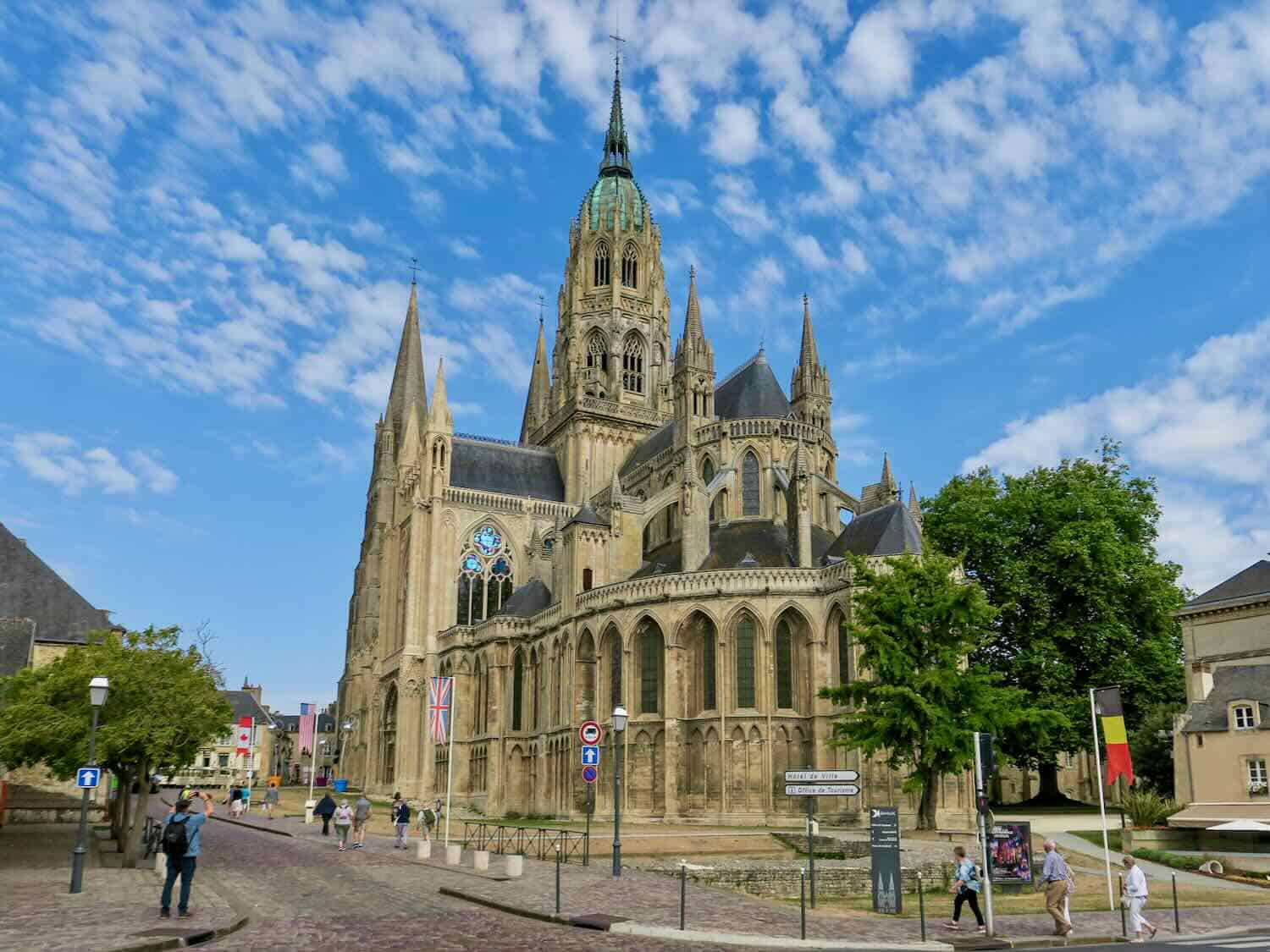
The little town of Bayeux contains another magnificent cathedral, but its raison d’etre remains the priceless 950-year-old Bayeux Tapestry. The masterpiece is a woolen embroidery on a linen backing.
Having done needlework in my younger years, I appreciated the complicated detail and symmetry throughout the 230-foot-long exquisite masterpiece. It tells the story of William the Conqueror, who became King of England in 1066 after the Battle of Hasting.
Historians think the Bayeux Tapestry was commissioned in the 11th century by Bishop Odo, William the Conqueror’s half-brother, to embellish his newly-built cathedral. The embroidery was first displayed in Bayeux Cathedral on July 14, 1077. It has remained in the city ever since.
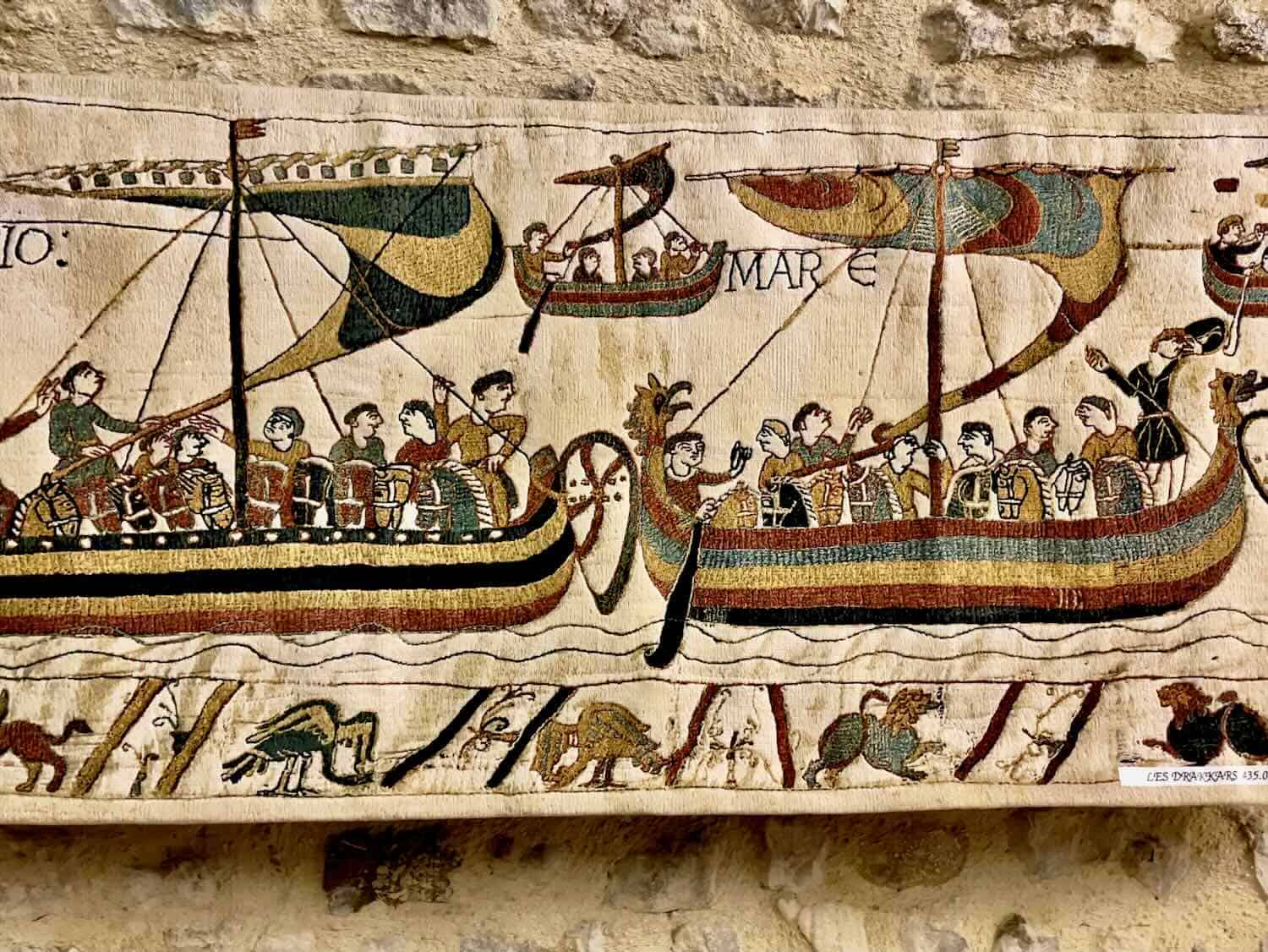
Viewing the tapestry involves moving around a horseshoe-shaped and darkened room while listening to an animated recording. The explanations bring not only informative but often humorous descriptions. The narrator refers to the numbered stitchery sections to keep you on track and avoid congestion.
I was so captivated by the embroidery that I wanted to return and start the tour again. Alas, that is not possible. Naturally, you exit through a gift shop, but this one is lovely and worth a look.
The second must-see in Bayeux is the old cathedral, also named Notre Dame. It’s a mix of Norman Romanesque and Gothic architecture and was the original home of the tapestry.
The crypt dates back to the 11th century. After those two sites, most visitors move to the Normandy battlefields, but you might visit the British Cemetery in Bayeux.
Visit Normandy Battle Sites and Cemeteries
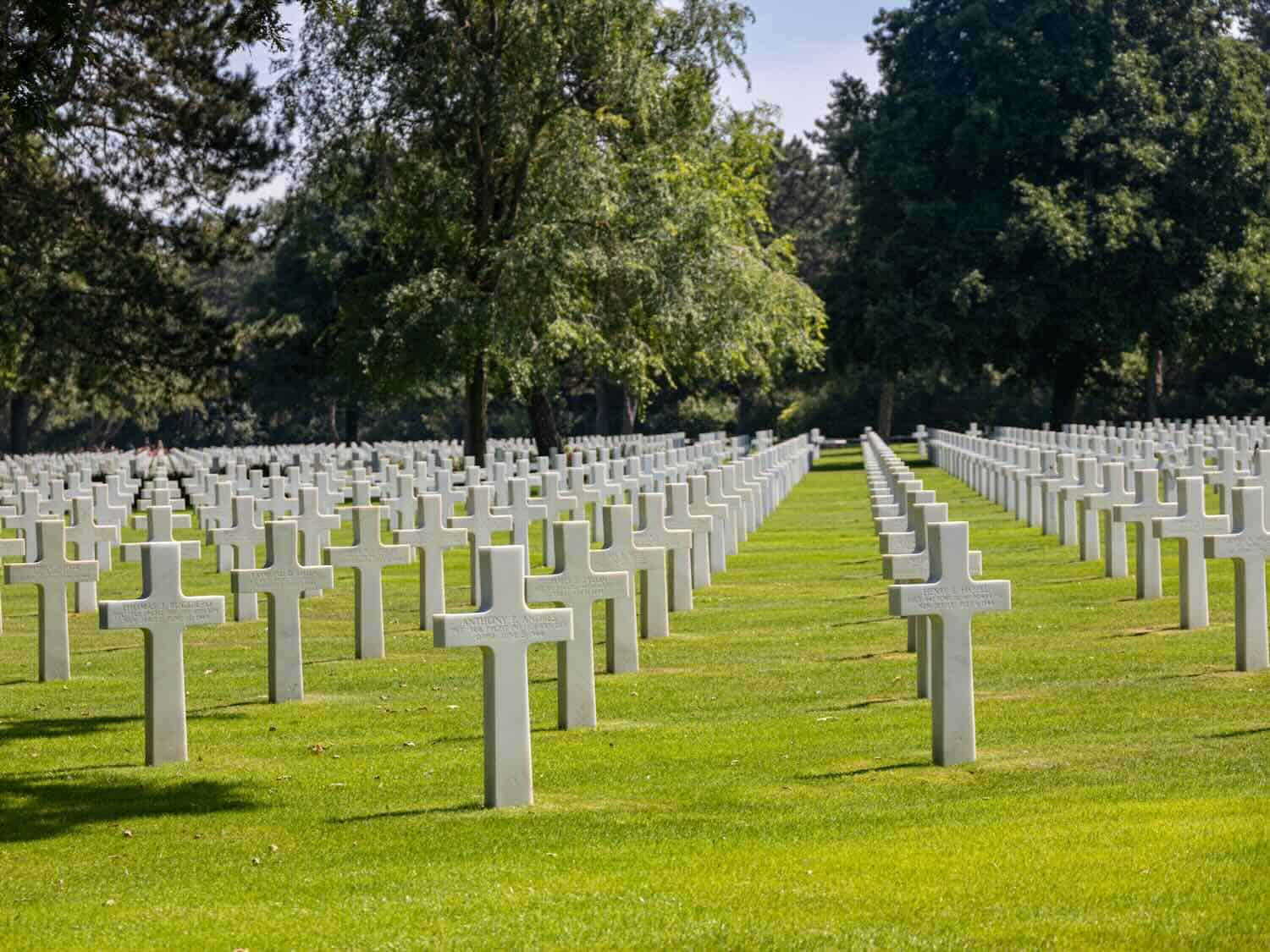
D-Day landings and battle sites are often the primary reason people tour Normandy.
The largest seaborne invasion in history left the British coast for Nazi-occupied northern France early morning of June 6, 1944. The fleet of ships made landings spread over a 30-mile stretch of the Normandy coast. This massive military operation combined the American, British, and Canadian Forces.
Caen Memorial Museum
A visitor’s first stop might be the Caen Memorial Museum, where you learn about the invasion and the lengthy and costly campaign that led to the liberation of Europe. Watch the film “D-Day and the Battle of Normandy,” featuring archived footage.
To comprehend the depth of this campaign, contemplate these numbers. During the Allied invasion of Normandy, the estimated total battle casualties for the United States were 135,000, including 29,000 killed and 106,000 wounded and missing. The estimated total battle casualties for the United Kingdom were 65,000, including 11,000 dead and 54,000 injured or missing.
Pointe du Hoc
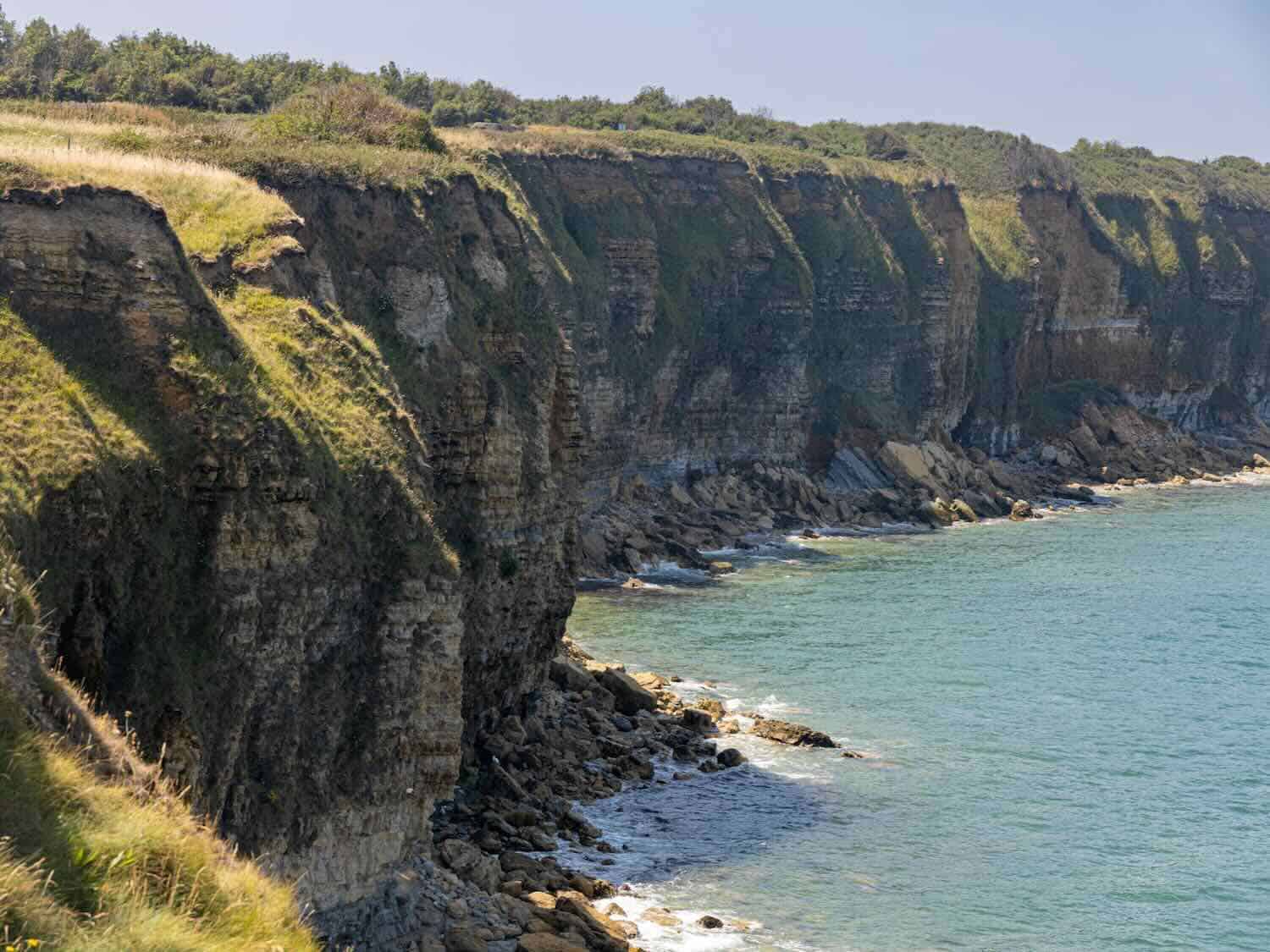
While a drive to Pointe du Hoc may cause you to backtrack, it gave me an ideal starting point for my visit to the D-day landing beaches. Here the U.S. soldiers climbed 100-foot, steep cliffs while encountering enemy fire.
Looking down, I could feel their courage. Visitors stroll along the bombed-out landscape and German artillery guns; some descend into a few German bunkers.
Omana Beach
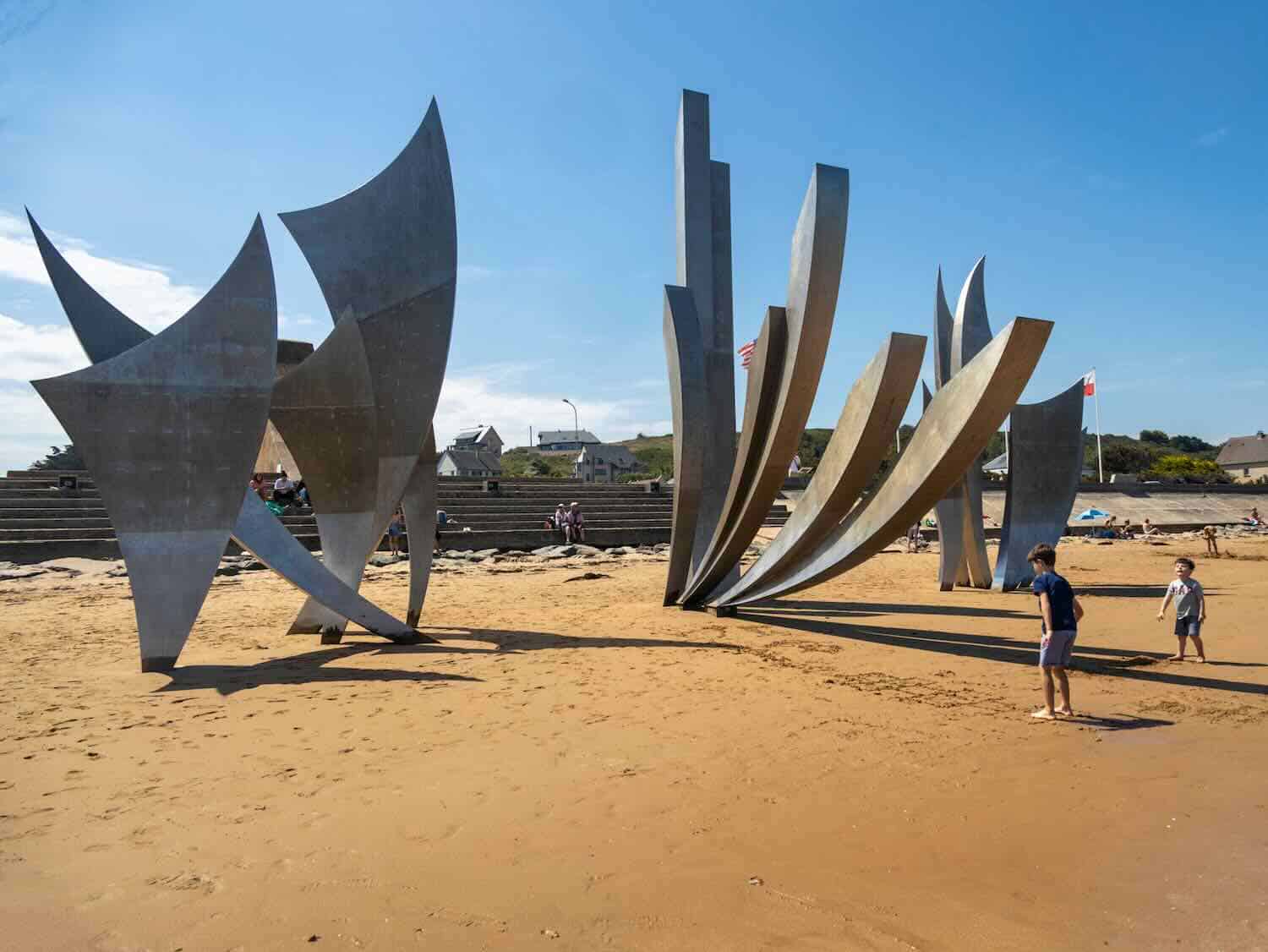
Move on to Omaha Beach, perhaps the most famous U.S. landing site called Bloody Omaha. The sandy, wide-open expanse surprised me; it was full of sunbathers and swimmers.
But in 1944, the beach assault experienced the worst ordeal of the D-day invasion. At Omaha, the Americans suffered 2,400 casualties that day, but 34,000 Allied troops landed by nightfall.
The stunning Les Braves Memorial stands on the beach, honoring the events in 1944. Another monument stands in the open town square. Memorial plaques hang from street lights demonstrating that the town has not forgotten the U.S. soldiers who fought and gave them freedom.
Arromanches
If you wish to see the British landing sites, go to Arromanches. In this place, the British built an artificial harbor to funnel machinery and fuel to the Allied troops for their continuing battles in France. The port was an incredible feat of military engineering. You can see about three dozen caisson remains off the coast.
Gold Beach
The objective for British troops at Gold Beach was to capture the ridge, about one mile from the sea, and advance inland towards Bayeux. They needed to link up with Juno and Omaha Beaches to the east and west.
Sword Beach
Sword Beach, the easternmost beach of the five landing areas, saw British troops land, supported by tanks. The Canadians landed and gained control at Juno Beach.
Utah Beach
At Utah Beach, a red granite obelisk overlooks honors the U.S. liberators. Many men parachuted into the Utah Beach area.
British Normandy Memorial
The newly-opened (2022) British Normandy Memorial (website) honors the 22,442 soldiers, sailors, marines, and airmen who died fighting under British command during D-Day and the Battle of Normandy. This number includes people from more than 30 different countries.
The site also contains a French Memorial dedicated to the French civilians who died during this time. It stands on a commanding site overlooking Gold Beach, just outside the seaside village of Ver-sur-Mer.
American Cemetery and Memorial
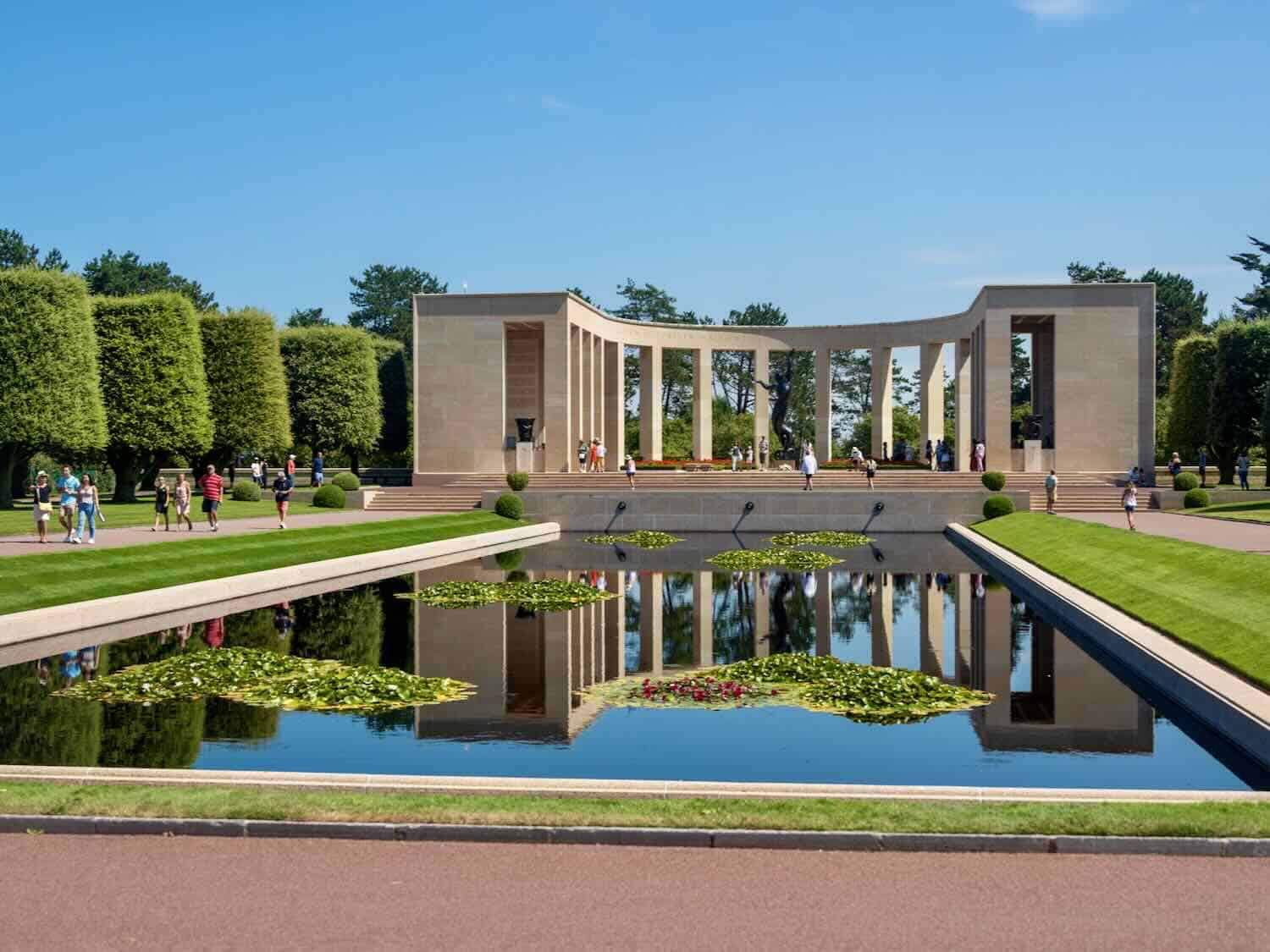
I suggest your last stop be the 172-acre American Cemetery and Memorial (website), with 9,387 American War Dead graves. The peaceful cemetery lies high on a cliff over Omaha Beach, filled with seemingly endless white crosses and Stars of David marking the graves.
The cemetery honors the Americans lost in the Normandy battles, including 307 unnamed. Many visitors look for the burial site of Theodore Roosevelt, 56, the eldest son of President Theodore Roosevelt. He died on July 12 12, 1944, after leading the assault on Utah Beach.
A 72-foot-high bronze statue stands at the center of a columned memorial area, “The Spirit of American Youth Rising from the Waves.” It’s a stark reminder that the average age of these soldiers was just 24.
Behind it stands the Wall of the Missing, listing 1557 whose mortal remains, as of 1953, were lost. A bronze rosette beside a name shows that the remains were later recovered, identified, and buried.
Understand that visiting the landing sites, the cemeteries, and the memorials may bring some emotional discomfort. Still, they keep alive the memory of those who fought bravely to defend global freedom. We owe them much.
Explore charming Honfleur
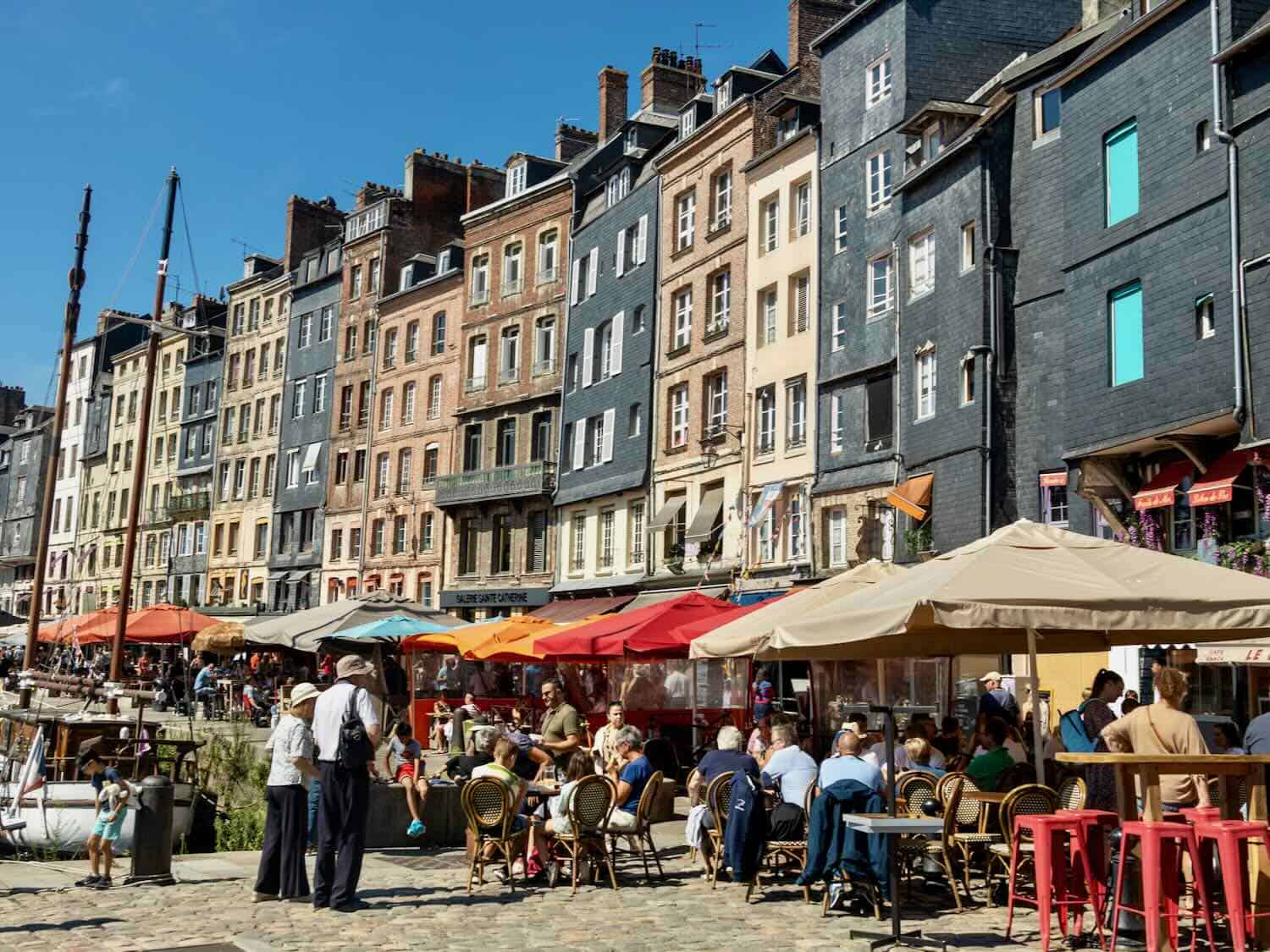
The port of Honfleur rests on the estuary where the Seine River meets the English Channel. The old city feels like a time capsule.
You can stroll through the colorful medieval village jammed with shops and homes in half-timbered buildings along narrow cobblestone alleys. The central rectangular harbor remains picturesque but busy. The Vieux Bassin, the old inner port, was first created for Louis XIV, the infamous king and creator of Versailles.
Don’t miss St. Catherine’s Church, a 15th-century vaulted timber structure erected by shipbuilders. The sanctuary appears rustic, very different from the magnificent cathedrals in Normandy because the shipbuilders used axes, not saws.
Honfleur was a vital port 600 years ago and the place Samuel de Champlain left to colonize Canada, founding Quebec in 1608.
Boomer Travel Tip
MedjetAssist Members who are hospitalized 150 miles from home receive medical transport to a home-country hospital of choice. Memberships from $99.
Visiting artistic sites in Normandy
While the region is known for WWII battlefields and medieval history, Normandy’s influence on artists deserves a look, too.
Vernon
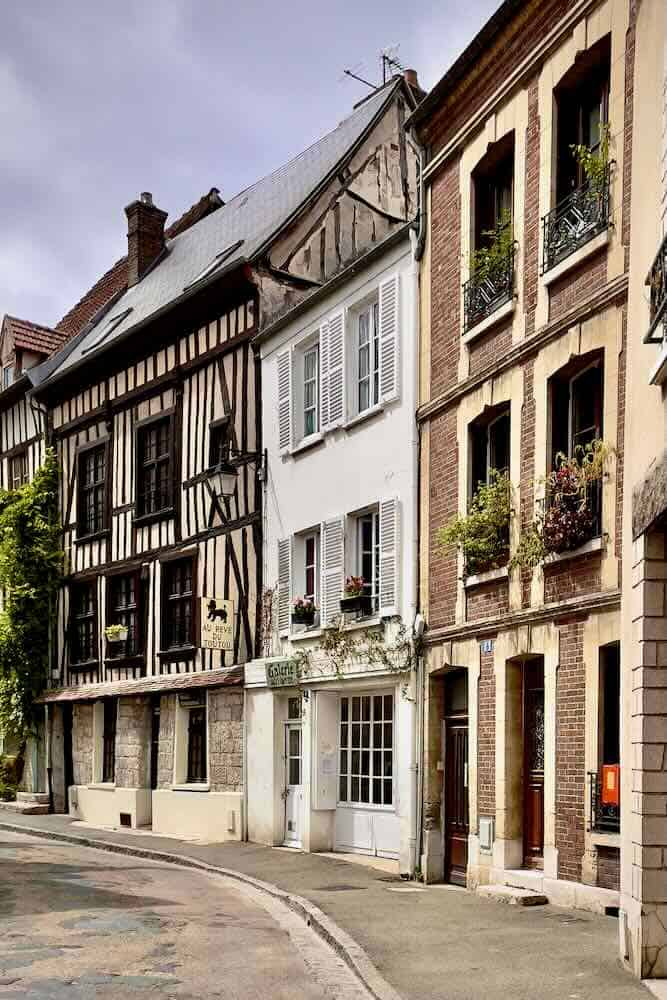
You can reach Vernon-Giverny Station from Paris by train in less than an hour. From spring to fall, a bus shuttle links Vernon-Giverny train station and the central bus station in Giverny’s main parking lot— from there, it’s an easy walk.
A stop in Vernon brings one of Normandy’s highlights: Monet’s House and Garden named Giverny (purchase tickets in advance). Depending on the size of the line waiting to tour the home, roam the gorgeous flower gardens first or afterward.
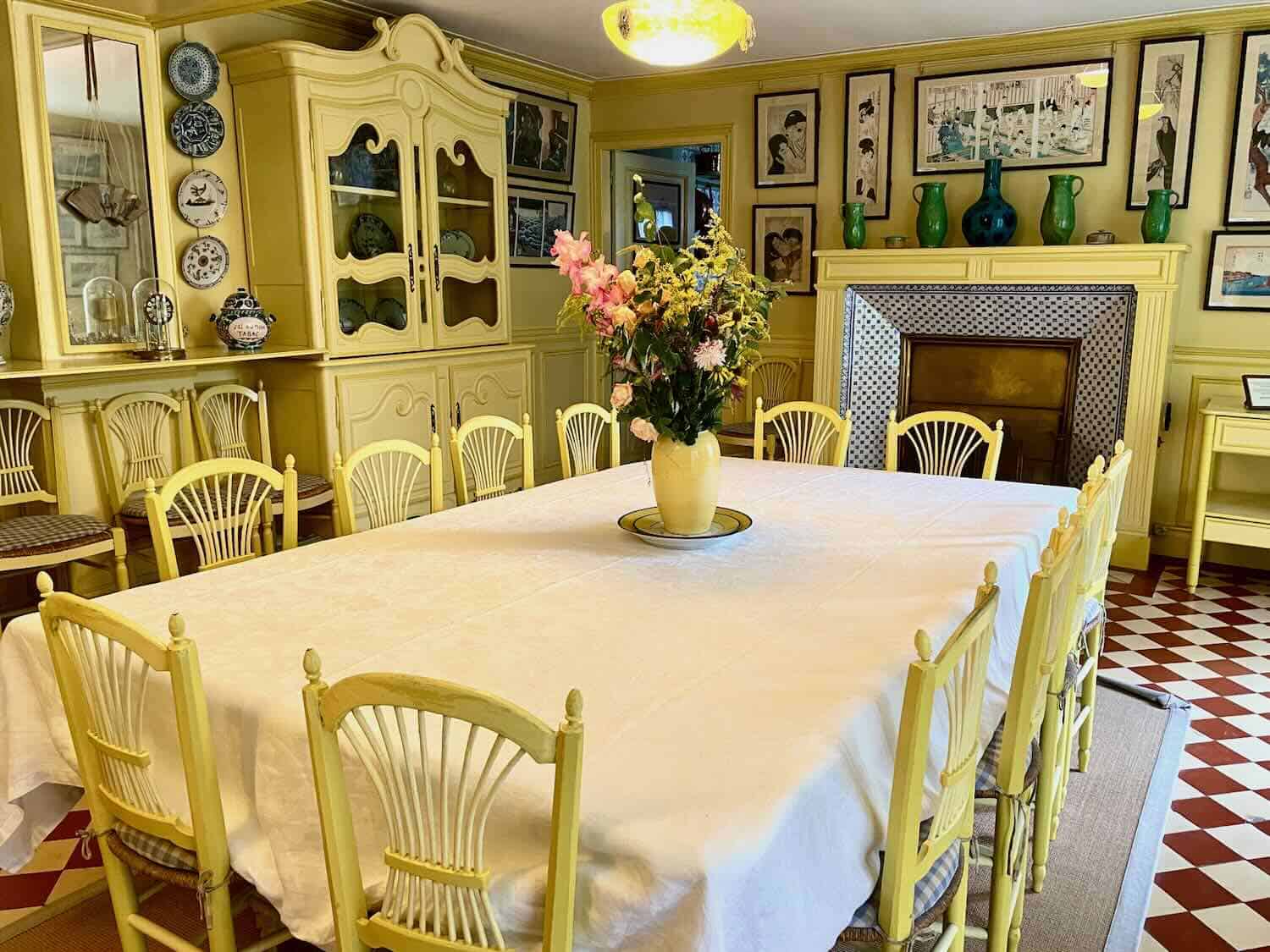
Monet’s colorful home features a buttery-lemon yellow dining room and a gorgeous blue and white tiled kitchen. The upstairs contains the bedrooms and a chance to look out the windows over the gardens.
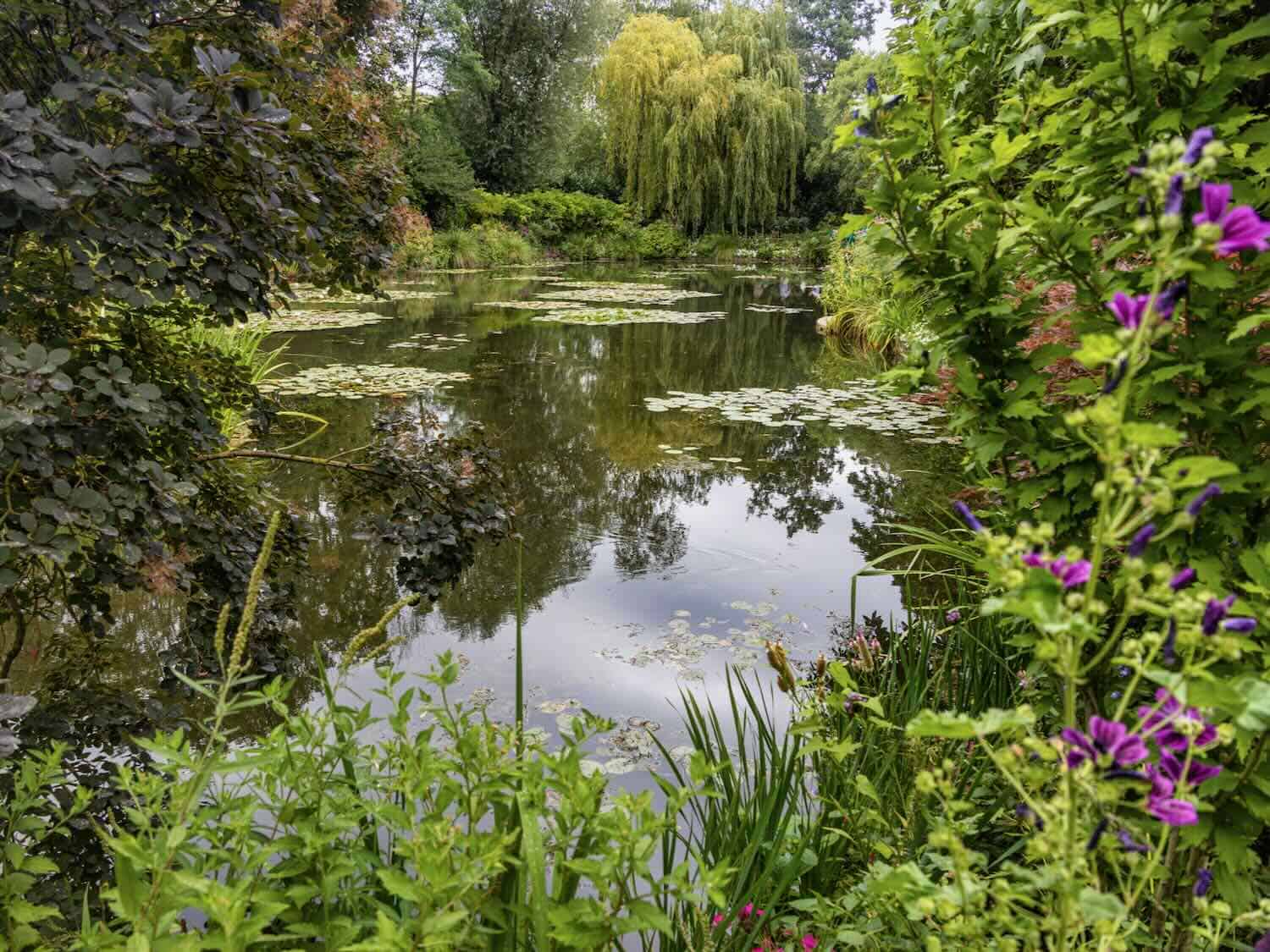
An under-road tunnel leads to the water and lily pond gardens. You can easily imagine Monet sitting in his rowboat to paint the enduring scene of water lilies.
If you choose, you can walk up to Monet’s grave. The gift shop here is extensive and one of the best. You will find something you want or gifts for others, guaranteed.
If time permits, explore Vernon on our own. The Old Mill House (Le Vieux Moulin de Vernon) is a popular site for photographers, and a little castle next door adds to the scene. If only Rapunzel were inside, letting her long hair flow down the castle walls!
Les Andelys
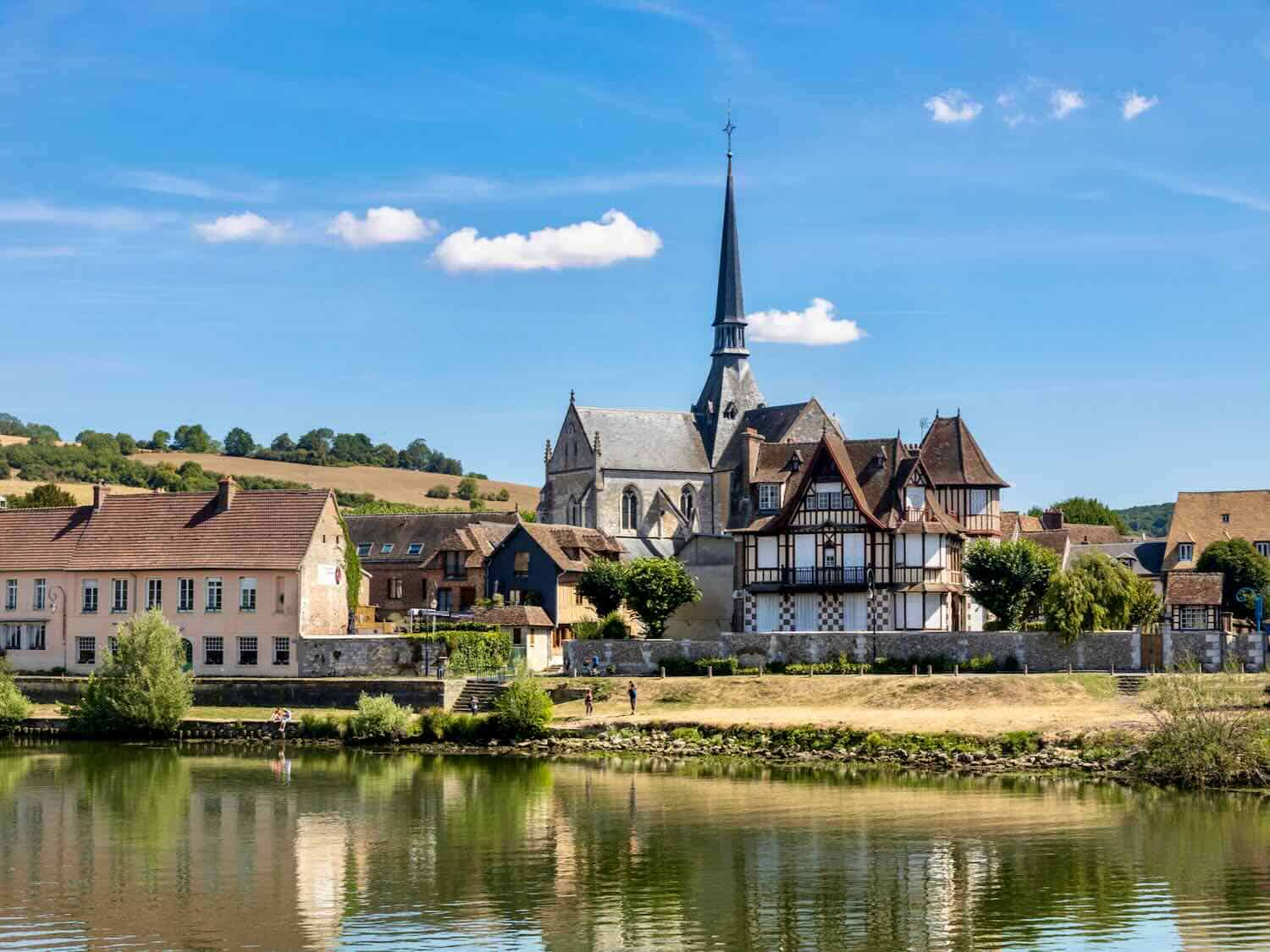
Les Andelys consists of two merged villages, Le Grand Andely and Le Petit Andy. The fortress Chateau Gaillard towers above the town, the strongest and most magnificent castle of its age. If you’re on a Seine River Cruise, watch as you approach, and you’ll realize the strategic defensive advantage offered by the site.
Today, the buildings lie as the ruins of Richard the Lionheart’s castle. He had it built in just two years (1196-1198) to protect his Norman possessions and its capital, Rouen. While you can view the wonder from below, a drive up to an overlook beckons for superb panoramas and a far better appreciation.
Take in the view from the top, then hike part-way down the hillside and back up to explore the castle. The ruins give a fine example of medieval siege warfare construction.
The hike is not strenuous except that the trail turns rocky or uneven in places. You will find signage within the castle walls explaining the history and more sweeping views.
When you finish strolling around the ruins, trek down into the charming town with half-timbered buildings, shops, and churches that are worth a peek.
Auvers-sur-Oise
The small village of Auvers-Sur-Oise provided much inspiration to the Impressionist Masters. Van Gogh, Camille Pissarro, and Paul Cézanne variously lived and worked in Auvers-Sur-Oise.
On a city walking tour, you can view the subjects of some of van Gogh’s most famous paintings, including the renowned Church at Auvers.
Continue to the cemetery and the simple grave where Vincent and, later, his beloved brother Theo lie. Their resting place is adjacent to the wheat field that van Gogh depicted in Wheat Field with Crows. Afterward, walk through the village center to the famous Auberge Ravoux, the artist’s final home, where many believe he took his own life.
Mont-Saint-Michel: An iconic scene
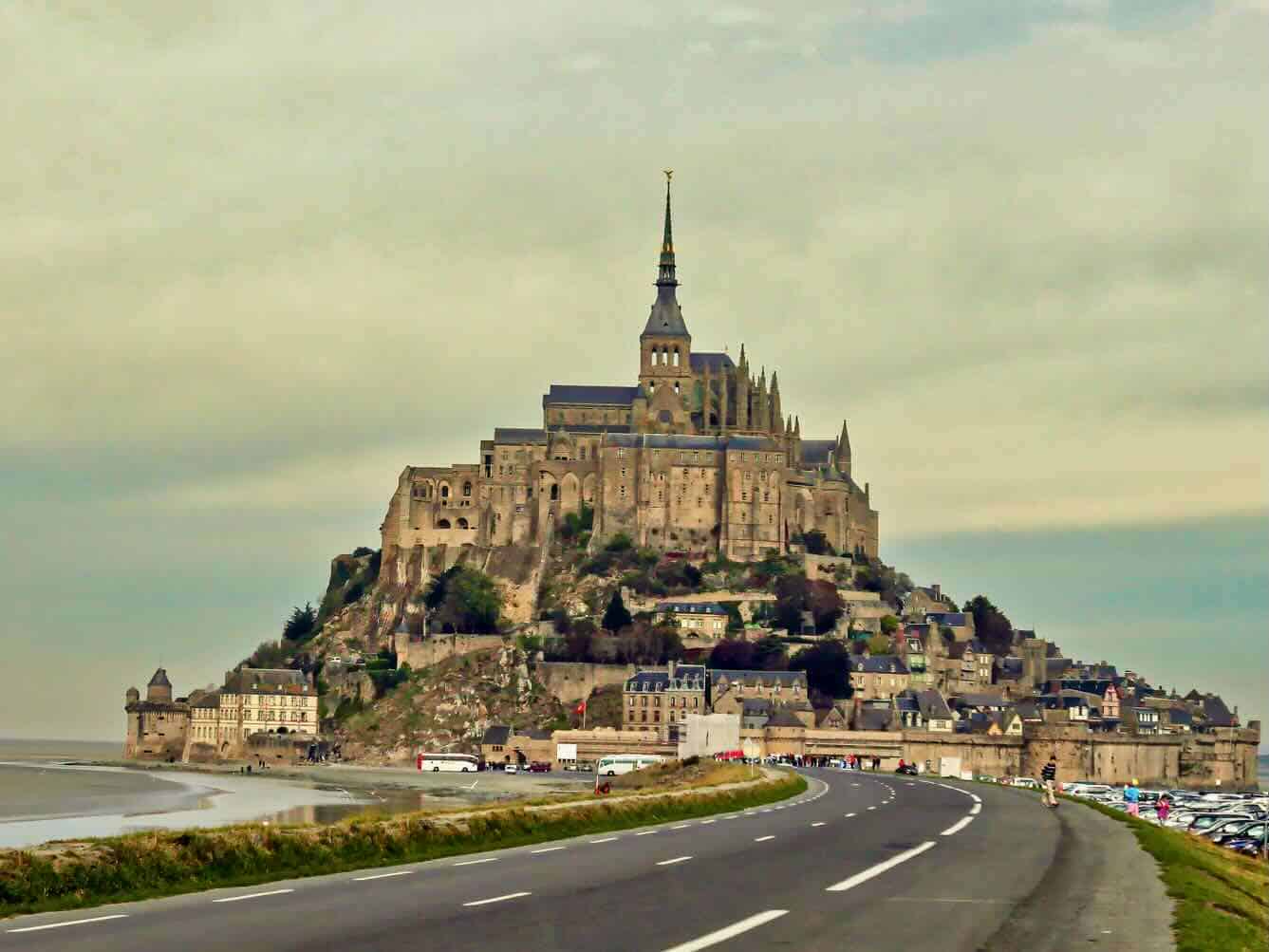
Many years ago, I made a memorable day trip from Paris to Mont-Saint-Michel by a high-speed train, which took about 3 hours. I arranged to be picked up by a guide for a 45-minute ride to the iconic site. However, many group tour companies run day trips from Paris.
The ancient Benedictine abbey, dedicated to the Archangel Saint Michael, and a tiny town rest on a dramatic granite outcropping rising from a flat seabed.
The structure almost defies balance when you first see the architectural wonder in the distance. It seems to float on an island, subject to twice-a-day tidal change.
Benedictines built the first church in 966. At the same time, a village developed to house the first pilgrims. The Hundred Years’ War (1337-1453) necessitated a military construction to protect Mont-Saint-Michel to withstand a siege of almost 30 years.
Following the French Revolution, the monks needed to abandon the abbey, which became a state prison. From then until 1863, 14,000 prisoners passed through this “Bastille of the Seas,” where dramatic tides and quicksand made escape impossible.
Miraculously, Mont St-Michel escaped damage during the Second World War. However, it became occupied by the Germans between 1940 and 1944.
In 1966, the religious community returned. In 1979, UNESCO added Mont Saint-Michel and its bay to its list of World Heritage sites.
As you walk, you gradually ascend toward the sacred spaces and spire at the highest point. The view of the tidal water alone is worth the climb. Naturally, you follow the path down to reach the causeway.
I’ve heard suggestions to book a room and stay the night after the day-trippers depart. I’d love to return.
Without a doubt, Normandy offers one of the best itineraries for those interested in history, scenic beauty, and fabulous French cuisine.

